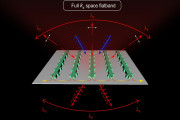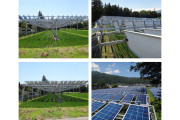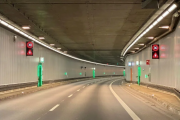 2025-10-14
2025-10-14
Ultrathin structures that can bend, focus, or filter light, “metasurfaces” are reshaping how scientists think about optics. These engineered materials offer precise control over light’s behavior, but many conventional designs are held back by inefficiencies. Typically, they rely on local resonances within individual nanostructures, which often leak energy or perform poorly at wide angles. These shortcomings limit their usefulness in areas like sensing, nonlinear optics, and quantum technologies.
A growing area of research looks instead to “nonlocal” m...
Continue reading →
 2025-08-06
2025-08-06
As countries race to expand renewable energy infrastructure, balancing clean electricity production with land use for food remains a pressing challenge—especially in Japan, where mountainous terrain limits space. A recent study led by researchers from the University of Tokyo explores a promising solution: integrating solar panels with traditional rice farming in a practice known as agrivoltaics. As reported in the Journal of Photonics for Energy, the research team installed a dual-axis sun-tracking photovoltaic (PV) system over a rice paddy in Miyada-mura, Nagano Pr...
Continue reading →
 2024-09-26
2024-09-26
SPIE, the independent European leader in multi-technical services in the areas of energy and communications, is upgrading the Heckenstaller and Luise-Kiesselbach tunnels on Munich’s Mittlerer Ring South-West with modern LED lighting. The low-maintenance, long-life LEDs offer annual energy savings of around 50% compared to the previous fluorescent tubes and ensure even safer 24-hour continuous operation of the multi-lane tunnels. A software system automatically adjusts the luminaires based on changing lighting conditions. The work is scheduled to begin in October ...
Continue reading →
 2015-01-27
2015-01-27
Now that we’ve flipped the calendar page to January, it’s a chance to celebrate that 2015 has been declared the International Year of Light and Light-based Technologies (IYL 2015) by the United Nations. We don’t take this opportunity – pardon the pun – lightly. This is for several reasons. First, our jobs revolve around light. We work for NASA’s Chandra X-ray Observatory, which is a telescope in space that observes X-rays from the Universe. X-rays are a kind of light. In fact, there are many different kinds of light, but only one that the human eye can detect naturally (called optical, or “visible,” light).
Continue reading →
 2025-10-14
2025-10-14
 2025-08-06
2025-08-06
 2024-09-26
2024-09-26
 2015-01-27
2015-01-27